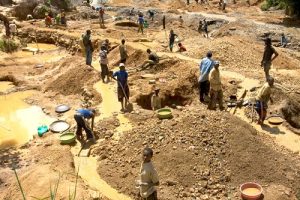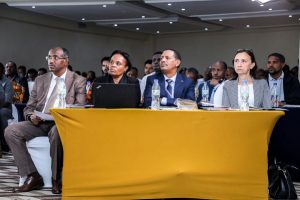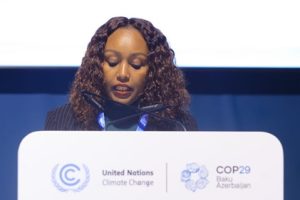BY BAHIRU SETEGNE
It is crystal clear that Ethiopia is the origin of coffee beans especially coffee Arabica. Of course, coffee had taken a lion share regarding to export commodities for earning foreign exchange for a long period.
But it is not giving the expected production due to many reasons. Shortage of technologies and too old coffee trees can be mentioned behind the issues.
Scholars recommend that too old coffee plants should be pruned aims to refresh the old trees and to boost its production and productivity. In fact, if the age of coffee tree is increasing more, its productivity will be the reverse.
Directly or indirectly, this will affect nation’s export through decreasing both the quantity and quality of coffee products. Therefore, the best solution is cutting off the bottom of the old coffee trees known as pruning should be done in order to tackle it.
Taking this into accounts, Ministry of Agriculture (MoA) along with one of its responsible institutions, Ethiopian Coffee and Tea Authority, has launched old coffee pruning at Jimma zone of Oromia State.
There, Minister of Agriculture and other higher officials have visited officially cultivation, seeds, nurseries, producers, functional cooperatives and machineries, as well as research centers regarding to coffee.
Oumer Hussien, Minister of Agriculture has launched coffee pruning officially at Gera woreda of Jimma zone and states coffee is the leading commodity of nation’s agricultural export to that we should give especial attention to develop this sector.
Oumer mentions that Ethiopia’s coffee export is always functional and attracted globally all the time that doesn’t be affected by COVID-19 even lockdown countries have taken this commodity.
The minister recommends two assignments to be conducted in this sector; (1) pruning the old coffee trees and, (2) planting the new ones to boost coffee production and productivity.
On the occasion, Oumer underlines utilizing irrigation is the best alternative to cultivate new coffee plants to double coffee production of Ethiopia as other world countries; it is possible to harvest up to 15 quintals per hectare if we utilize irrigation effectively.
“In Jimma areas, 460 thousand hectares of coffee has been cultivating and 30 percent of these coffee trees will be pruned to refresh the old ones,” Oumer mentioned. “Like Jimma, other coffee potential areas will have to promote pruning mobilizations to boost coffee products,” Oumer recommends.
“When coffee trees become too old, it yields more fewer than the younger ones, hence, the coffee community will have to prune to refresh the old trees,” Oumer stresses.
Aynalem Nigussie, State Minister of Agriculture, on her part briefs that it is so importance to support the farmers who produce coffee through address mechanization tools and technologies to conduct coffee pruning easily.
“In fact, we have observed the shortage of modern tools and technologies at this field visiting of Jimma areas. Therefore, the given stakeholders should conduct their own effort to realize the quality of coffee to earn more foreign exchange,” the state minister sates.
“Though coffee cultivation needs more effort, it is the way of earning much many for producers that the market system of this fiscal year is better than the previous, ”Aynalem said.
“We are undertaking many mechanisms in order to empower different unions who engage in coffee market system”, Aynalem said. Moreover, the state minister pointed out that vertical integration is being introduced in order to make join the coffee producers to foreign exchange directly at the global market that will enable to fight brokers.
She recommends that the farmers or producers should to cultivate coffee by applying cluster based approach to be beneficiary more which provides strong market linkage with traders and exporters.
The evidence of Jimma zone cooperative Agency shows there are more than 110 coffee unions and three of them have exported coffee to the globe directly and imported machineries themselves and will be increased soon.
According to Ethiopian Coffee and Tea Authority, Director-General Adugna Debela (Ph.D), about 67 percent of Ethiopia’s coffee plant is too old that should be pruned 30 cm above the ground to make coffee trees young again to maximize Ethiopian coffee production. Consequently, pruned coffee trees production will be doubled 5 times than unpruned ones, as to Adugna.
“Hot mobilization has been, therefore, launching to prune old coffee trees at coffee growing parts of the nation, for instance, Gera woreda of Jimma zone has been pruning the coffee trees effectively to replace the old coffee trees with the new ones for maximizing coffee production and productivity as well as keeping the quality, ”as to the director-general.
“Last two fiscal years, over 200 thousand hectare of old coffee trees had been pruned and 60 thousand hectare will be done this physical year through mobilizing coffee potential areas of the nation”, Adugna elaborated.
The director-general mentions that forest coffee (yechaka buna) that accounts 5 percent of nation’s coffee which gives fewer products than the planted ones, as a result, some studies should be conducted on how to manage it.
Ousman Surur, Federal Cooperative Agency director-general, sates that the agency along with Ministry of Agriculture (MoA) and Ethiopian Coffee and Tea Authority is conducting several activities to empower the capacity of coffee producers and cooperatives to conduct good coffee marketing system or sales through addressing training, sharing of experience and other mechanisms.
The numbers of coffee cooperatives and exporters around Jimma is increasing day-to-day and their capacity of exporting and exporting lines of destinations is also increasing in a good manner, Ousman reminds.
Director of Jimma Agricultural Research Center, Girma Hailemichael (Ph.D), discussed that this research center has released and introduced about 42 coffee seed varieties (7 are hybrid) based on different diversities of the nation.
Girma says, “We believed that our coffee seeds are addressed at coffee growing areas throughout the country because we distribute 250 to 300 quintals improved coffee seeds per year”.
“Our released improved seeds will be productive if coffee producers cultivate applying and keeping the recommendations given during growing, harvesting, postharvest handling,” the director concluded.
In summing up, if effectively assisted by researches and done timely, pruning adds to coffee productivity and saves the forest enhancing climate change resilience efforts.
The Ethiopian Herald February 14/2021





